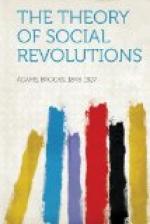“I cannot agree to the decision of the court in this case. It practically overrules Munn v. Illinois.... The governing principle of those cases was that the regulation and settlement of the fares of railroads and other public accommodations is a legislative prerogative, and not a judicial one. This is a principle which I regard as of great importance....
“But it is said that all charges should be reasonable, and that none but reasonable charges can be exacted; and it is urged that what is a reasonable charge is a judicial question. On the contrary, it is preeminently a legislative one, involving considerations of policy as well as of remuneration.... By the decision now made we declare, in effect, that the judiciary, and not the legislature, is the final arbiter in the regulation of fares and freights of railroads.... It is an assumption of authority on the part of the judiciary which, ... it has no right to make. The assertion of jurisdiction by this court makes it the duty of every court of general jurisdiction, state or federal, to entertain complaints [of this nature], for all courts are bound by the Constitution of the United States, the same as we are.”
There is little to add to these words. When the Supreme Court thus undertook to determine the reasonableness of legislation it assumed, under a somewhat thin disguise, the position of an upper chamber, which, though it could not originate, could absolutely veto most statutes touching the use or protection of property, for the administration of modern American society now hinges on this doctrine of judicial dispensation under the Police Power. Whether it be a regulation of rates and prices, of hours of labor, of height of buildings, of municipal distribution of charity, of flooding a cranberry bog, or of prescribing to sleeping-car porters duties regarding the lowering of upper berths,—in questions great and small, the courts vote upon the reasonableness of the use of the Police Power, like any old-fashioned town meeting. There is no rule of law involved. There is only opinion or prejudice, or pecuniary interest. The judges admit frankly that this is so. They avow that they try to weigh public opinion, as well as they can, and then vote. In 1911 Mr. Justice Holmes first explained that the Police Power extended to all great public needs, and then went on to observe that this Police Power, or extraordinary prerogative, might be put forth by legislatures “in aid of what is sanctioned by usage, or held by ... preponderant opinion to be ... necessary to the public welfare."[29]




